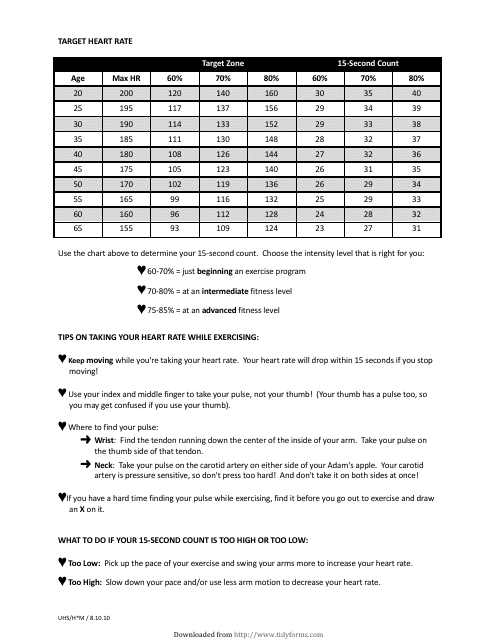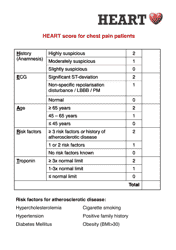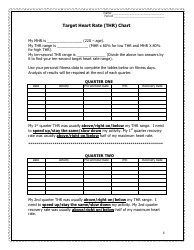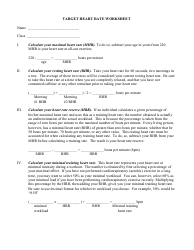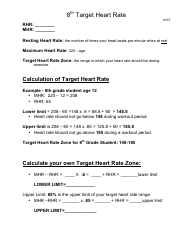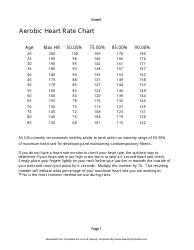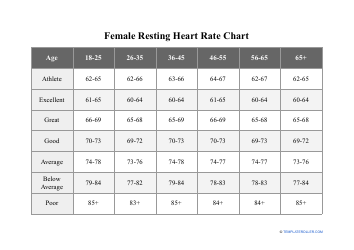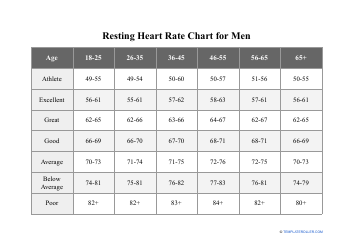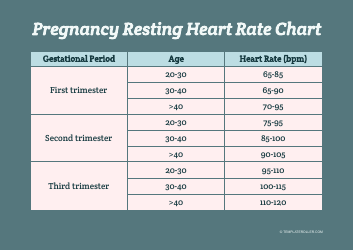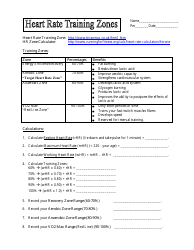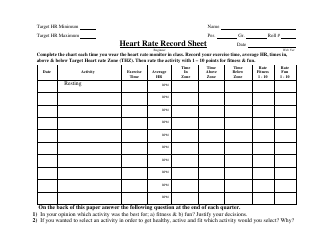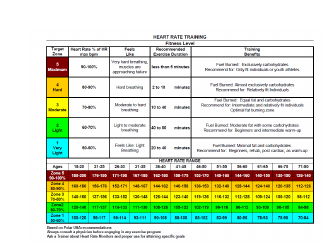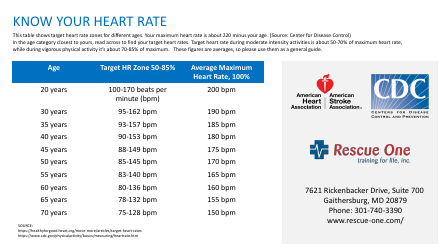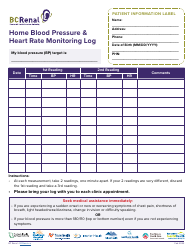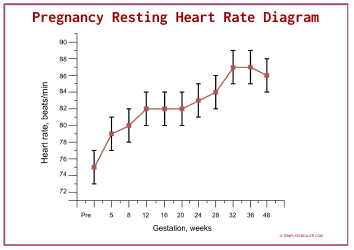Target Heart Rate Chart
The Target Heart Rate Chart is a tool used to help individuals determine their optimal heart rate during exercise. It helps track and monitor your exercise intensity to ensure you are working out at the right level to achieve your fitness goals.
The Target Heart Rate Chart is typically not filed by any specific entity. It is a resource that can be used by individuals for self-reference in order to determine their target heart rate during exercise.
FAQ
Q: What is a target heart rate?
A: Target heart rate refers to the range of heartbeats per minute that you should aim for during exercise.
Q: Why is it important to know your target heart rate?
A: Knowing your target heart rate helps you determine the intensity of your workout and ensure you're getting the most out of your exercise routine.
Q: How can I calculate my target heart rate?
A: To calculate your target heart rate, subtract your age from 220 and then multiply that number by the desired percentage of your maximum heart rate. The American Heart Association recommends aiming for 50-85% of your maximum heart rate during exercise.
Q: What are the benefits of exercising within my target heart rate zone?
A: Exercising within your target heart rate zone helps improve cardiovascular fitness, burn calories, and increase endurance.
Q: Is the target heart rate the same for everyone?
A: No, the target heart rate varies depending on your age, fitness level, and overall health. It's important to consult with a healthcare professional to determine your target heart rate range.
Q: What are the different heart rate zones?
A: The different heart rate zones include: resting heart rate zone, warm-up zone, fat-burning zone, aerobic zone, and anaerobic zone. Each zone corresponds to different exercise intensities.
Q: How do I monitor my heart rate during exercise?
A: You can monitor your heart rate during exercise by using a heart rate monitor, wearable fitness tracker, or by checking your pulse manually.
Q: Can I exceed my target heart rate?
A: It's generally safe to exceed your target heart rate for short durations during intense exercise, but it's important to listen to your body and gradually increase your fitness level over time.
Q: Are there any risks associated with exercising at the target heart rate?
A: Exercising at the target heart rate is generally safe for most individuals, but if you have any underlying health conditions or concerns, it's best to consult with a healthcare professional before starting any new exercise program.
Q: How often should I exercise within my target heart rate zone?
A: The American Heart Association recommends at least 150 minutes of moderate-intensity aerobic activity or 75 minutes of vigorous-intensity aerobic activity per week, or a combination of both, to improve cardiovascular health.
